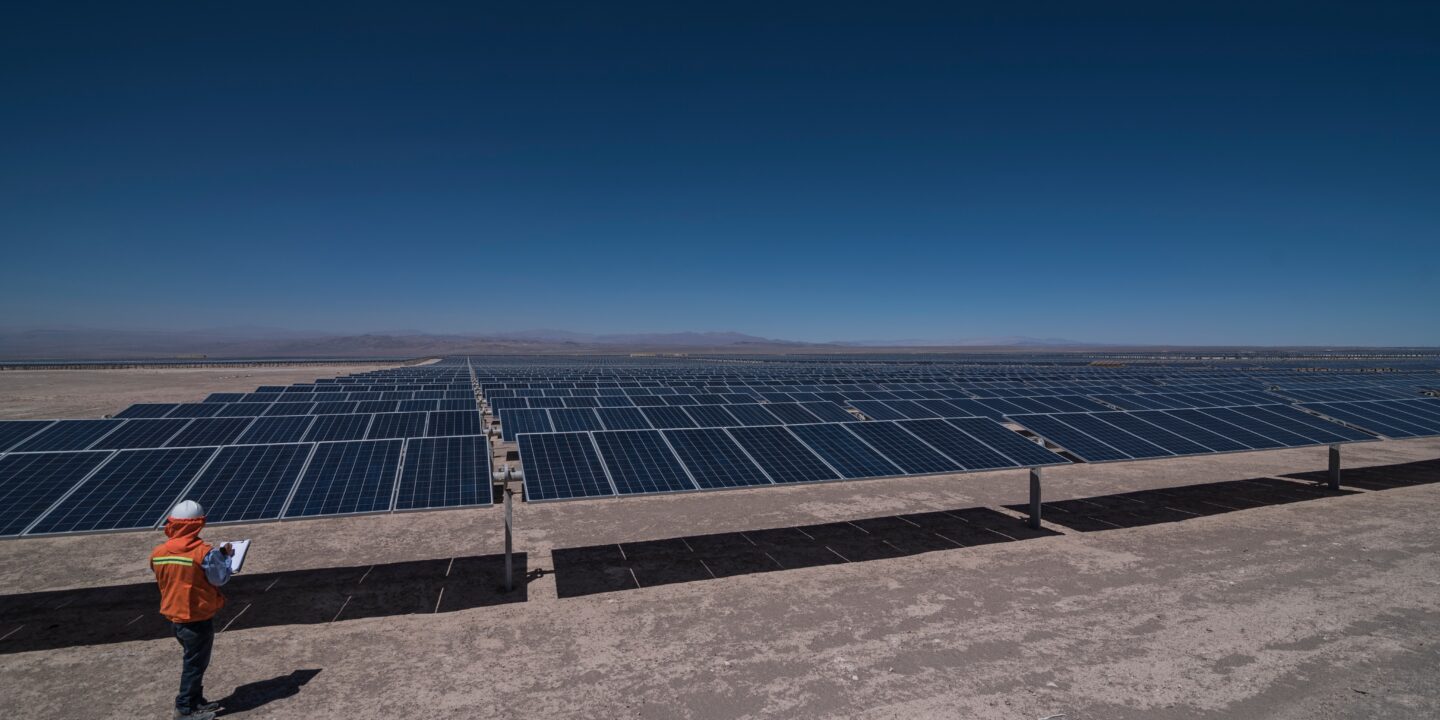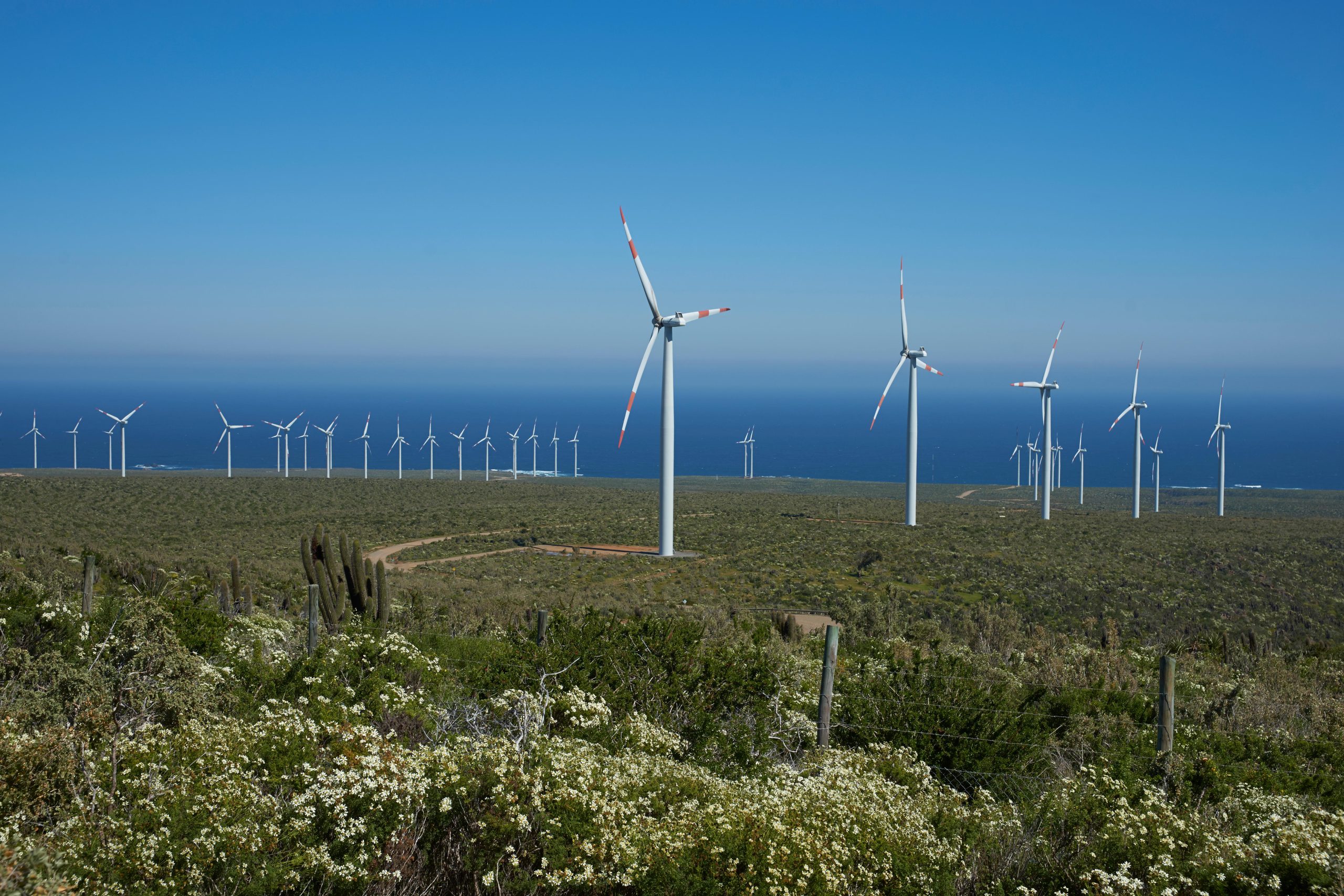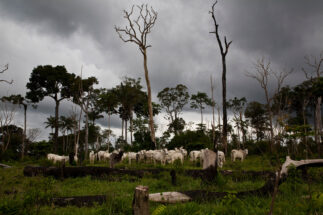Two years ago, Chile set itself the goal of becoming one of the world’s main producers of green hydrogen, the clean, combustible gas often dubbed the “fuel of the future”. But the country has since encountered difficulties, including disputes over a new research hub aimed at boosting its hydrogen industry. Meanwhile, industry experts have voiced concerns over Chile’s lack of focus on generating domestic demand for the fuel.
What is “green” hydrogen?
Hydrogen gas releases no greenhouse gas emissions when it is burned, but has often been obtained as a by-product of polluting processes. Hydrogen can be considered “green” if produced using renewable energy sources such as wind or solar power, which also emit no greenhouse gases.
In November 2020, Chile presented its National Green Hydrogen Strategy. By 2025, it aims to reach 5 GW of renewable energy capacity dedicated to electrolysis – the process of splitting water with electricity that is used to create “green” hydrogen. With this, Chile intends to produce the world’s cheapest green hydrogen by 2030, and make the country one of the top three exporters of the fuel by 2040.
The strategy was due to be updated in 2025 to account for advances in technology and infrastructure expected by that date. But in August, the government of President Gabriel Boric brought this update forward to the end of this year, and added a new timeline for the allocation of public land for project development.
A spokesperson for the Chilean Ministry of Economy told Diálogo Chino that the aim is for green hydrogen to “generate an industry that promotes a new development model focused on the generation of local value.” The strengthening of green hydrogen production would also help reduce emissions and promote more sustainable growth, they added.
In August, the Boric government launched a new committee for the development of a national green hydrogen industry. With various ministries participating, the group will seek to boost state support for the sector. This came alongside the launch of the government’s energy sector agenda to 2026, which mentions efforts to promote the deployment of the country’s first 10 green hydrogen projects.
Corfo, the government agency in charge of supporting entrepreneurship and innovation, signed agreements at the end of 2021 to provide US$50 million in finance for the country’s first six green hydrogen projects, which are expected to attract US$1 billion in domestic and foreign investment.
The Faro del Sur Project, led by the local subsidiary of Italian corporation Enel Green Power, will produce 25,000 tonnes of green hydrogen per year in Magallanes, the country’s southernmost region. Global multinational Linde’s HyPro Aconcagua project is expected to generate 3,000 tonnes of green hydrogen per year, replacing a portion of conventional “grey” hydrogen production at an oil refinery in the central Valparaíso region. Meanwhile, Chilean mining and steel company CAP will build a plant in the Biobío region that is expected to produce 1,550 tonnes of green hydrogen per year.

Two projects will be located in the northern Antofagasta region: the HyEx green hydrogen project led by French energy company Engie, and the Antofagasta Mining Energy Renewable (AMER) project. The six-strong roster is completed by Green Hydrogen Quintero Bay, a project in the Valparaíso region led by domestic gas firm GNL Quintero and Spanish multinational Acciona Energía.
“What is being done is to drive, from the state and from the companies, the creation of an industry that will bring us zero-emissions energy, and one that will bring development, sophistication, green jobs and incentives for the development of human capital,” said María Paz de la Cruz, general manager of H2 Chile, the Chilean hydrogen association.
“This shows the transversal impulse that is being given to this industry, so as to turn Chile, in the medium term, into one of the countries capable of offering the most competitive hydrogen,” she added.
But while Chile has so far moved in the right direction, the country faces a number of obstacles if its nascent green hydrogen industry is to fulfil its goals.
This is an industry that will bring us zero-emissions energy, development, sophistication and green jobs
Miguel Arrarás, director for Chile at Acciona Energía, said the company’s Quintero Bay project could be put at risk because of a currently insufficient demand. “We have had conversations with some industries in the area, but we are in negative profitability with [current] prices. It is not assured that the plant can be built,” he warned at an event in August.
Elsewhere, Enel Green Power recently announced that it had decided to withdraw its plans for a proposed wind farm that would help power green hydrogen production at its Faro del Sur project, following an initial environmental impact assessment by the state. The company said the observations and demands made of the project had “exceeded the usual standard”, and that all the information requested had been provided. The government, meanwhile, said the project “suffers from a serious lack of information”.
Focusing on exports
At the end of August, Hermann von Mühlenbrock, a prominent Chilean businessman and former president of the Federation of Chilean Industry (Sofofa), wrote of his dissatisfaction with the government’s strategy for the green hydrogen industry, in an opinion piece for the newspaper El Mercurio.
One of his complaints focused on the agreement signed between the Chilean Ministry of Energy and the Port of Hamburg in Germany to export green hydrogen – an agreement in which the private sector was absent. Private participation is necessary, von Mühlenbrock said, as meeting the targets of the national green hydrogen strategy could require an investment of “over US$2 billion” in each project.

Patricio Lillo, an engineering professor at the Pontifical Catholic University of Chile, agrees with this analysis. “All the focus has been on exporting green hydrogen and not on domestic consumption,” he told Diálogo Chino.
Lillo added that this has, among other issues, led to little work being done on the land-use planning required for the development of an industry with a potentially vast footprint.
“It is necessary to plan the way in which the territory is occupied. It is not only about the sum of local impacts, but a more general view of the necessary infrastructure to be installed, such as electricity transmission lines, roads, pipelines in ports and water desalination plants, among others,” Lillo said. Planning at the country level can considerably reduce the impact, he added.
The hydrogen association’s Paz de la Cruz echoed this sense of urgency to provide clarity on land-use planning, and on how issues such as permits or the use of strategic infrastructure will be made viable. “Planning processes are key to obtaining social licences for initiatives, in which all the areas that will be affected by the installation of projects are made clear,” she said.
Paz de la Cruz added that it is also necessary to generate the conditions for green hydrogen initiatives to reach commercial scale, in order to take advantage of opportunities for the development of a local industry and for export. “We believe that a future issue for the country is to encourage foreign investment in energy-intensive industries, such as cement or steel. By setting up [a green hydrogen industry] in Chile, they would have access to energy with a clear green quality,” she said.
Technology drive on hold
One of the key pillars highlighted by both the National Green Hydrogen Strategy and the 2022–2026 Energy Agenda is the development of local technology, a push that has recently stalled.
In January 2021, the previous government, which left office in March of this year, opened a tender through Corfo for the establishment of the Chilean Institute of Clean Technologies (ITL), a research and development centre to be located in the Antofagasta region. The tender was awarded to a consortium made up by Associated Universities Inc – a research organisation sponsored by nine US universities – in conjunction with four Chilean universities.
All the focus has been on exporting green hydrogen and not on domestic consumption
The Association for the Development of the Clean Technology Institute (ASDIT), led by 11 Chilean universities alongside other institutions, also submitted a proposal to run the ITL, and complained about the outcome of the tender, citing flaws in the process.
“We are obliged to make public our deep disappointment, as we find it absurd that an international consortium, with few links to the Chilean mining and energy world, intends to lead, through the ITL, a proposal for the development of a new industry for our country,” ASDIT said in a statement.
Eventually, an investigative commission of the Chamber of Deputies, the country’s lower house of congress, produced a report in December 2021 in which it concluded that the proposal presented by ASDIT was far superior to that of AUI. The supreme court then invalidated the award this July, and Corfo finally agreed to reallocate the supervision of the research institute, but did not give a definite date.
Diálogo Chino approached Corfo for comment on the progress of this process, and on the impact delays to the ITL may have on the development of Chile’s green hydrogen industry, but did not receive a response.







